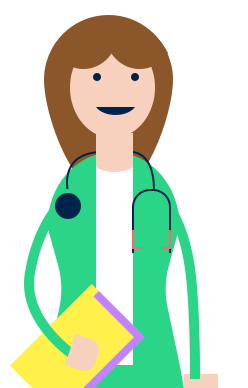Chlorpromazine is used to treat and prevent the return of symptoms in Schizophrenia and other mental health related conditions. Learn how to use the medication, its common side effects, special precautions to watch out for, and more.
What is this medication for?
Chlorpromazine belongs to a class of medications known as typical (first-generation) antipsychotics. It is used to treat and prevent the return of symptoms in Schizophrenia and other mental health related conditions such as:
- Hearing, seeing or sensing things that are not real
- Having mistaken beliefs
- Uncontrolled anger
- Being overly suspicious
Chlorpromazine may also be used to control severe behavioural problems in children. Check with your healthcare professional if you are unsure why you are given this medication.
How should I take or use this medication?
- Take your medication according to the instructions stated on the medication label.
- Chlorpromazine may be taken with or without food.
- Do not stop taking or adjust the dose of this medication without checking with your doctor.
- Chlorpromazine needs to be taken regularly for a few weeks before you can feel its full benefits. You should not stop taking this medication even if you do not feel better at the beginning. Continue to take this medication even after you feel better to prevent your symptoms from returning.
- Do check with your doctor on how long you will have to be on this medication.
What should I do if I forget to take or use this medication?
- If you forget to take a dose, take it as soon as you remember. However, if more than half of the time to the next dose has passed, skip the missed dose and take the next dose at your usual timing.
- For example, for a medication to be taken two times daily at 8am and 8pm, and you missed your first dose at 8am, skip the first dose if it is after 2pm, and take your second dose at the usual timing at 8pm. Do not take two doses to make up for the missed dose.
What precautions should I take when taking or using this medication?
Inform your healthcare professional if:
- You are allergic to this medication or any of the other ingredients of this medication
- You are pregnant, planning to become pregnant, or breastfeeding. If you are pregnant and/or breastfeeding, your doctor would have discussed the potential benefits and side-effects with you and should you have further questions or concerns, do consult your doctor.
- You are taking any other medications (including those that can be bought without a prescription), supplements, traditional Chinese medicine and herbal products. Some of them may affect how this medication works or cause serious drug interactions.
- You have or have ever had:
- Other drug allergies
- Medical conditions such as:
- Kidney, liver or severe lung disease, irregular heartbeat or other heart problems, glaucoma (high pressure in the eye), thyroid disease, urinary or prostate problems, jaundice (yellowing of eye whites or skin), stroke, pheochromocytoma (tumour of the adrenal glands), low blood levels of potassium
- Parkinson’s disease, seizure (fits), low blood pressure, blood disorders, dementia, history of blood clots, diabetes
Chlorpromazine can make your skin more sensitive to sunlight. Avoid prolonged exposure to sunlight. Wear protective clothing or use sunscreen if necessary.
What are some common side effects of this medication?
The mentioned side effects generally affect up to 10% of patients.
- Constipation
- Drink more water (if you do not have any fluid restriction), eat more high-fibre foods, and exercise regularly
- Speak to your doctor or pharmacist if you need
amedication to help with your constipation
- Dizziness
- Get up slowly from a sitting or lying down position
- Drowsiness or feeling tired
- Avoid driving or taking part in activities that require concentration
- Discuss with your doctor if you can take your medication at a different time of the day
- Muscle movement side effects (extrapyramidal side effects) – do speak to your doctor for further management. Examples include:
- Muscle stiffness and spasms (such as in the face, neck and back), difficulty in speaking or swallowing, twitching, or upward rolling of eyes (symptoms of dystonia)
- Restlessness or need to keep moving constantly (akathisia)
- Uncontrollable shaking of limbs (tremors)
- Increase in appetite, weight gain
- Exercise regularly and eat a healthy and balanced diet
- Dry mouth
- Chew sugar-free gum, suck on sugar-free hard candies or ice chips, sip water regularly
- Increased prolactin hormone in the body (hyperprolactinemia):
- This may result in changes in menstrual cycle in females (irregular or stopping of menstrual periods) and/or abnormal breast swelling, soreness or discharge (in both men and women)
- This condition can be managed by speaking to your doctor
Most of the side effects listed here will improve with time. Speak with your doctor if any of them continues, worsens or affects your daily life.
What are some rare but serious side-effects that I need to seek medical advice immediately?
The symptoms of a drug allergy include one or more of the following:
- Swollen face/eyes/lips/tongue
- Difficulty in breathing
- Itchy skin rashes over your whole body
Rarely this medication may cause:
- Confusion, high fever, severe muscle stiffness, irregular blood pressure (signs and symptoms of neuroleptic malignant syndrome)
- Uncontrollable movements such as in the face, tongue, jaw or other parts of the body (tardive dyskinesia)
- Blurred vision
- Difficulty in passing urine
- Seizures (fits)
- Sudden weakness or numbness in the face, arms or legs, and speech or vision problems (signs and symptoms of stroke)
- Dark brown urine, light coloured stools (pale grey/clay-coloured), yellowing of skin and eyes (symptoms of liver problems)
- Fast or irregular heartbeat, fainting episodes (signs and symptoms of an abnormal heart beating rhythm (prolonged QTc interval))
- Fever, chills, sore throat and/or mouth ulcers that do not go away (symptoms of blood dyscrasias)
- Severe chest pain, difficulty breathing, or severe pain or swelling in either of the legs (symptoms of venous thromboembolism)
If you experience any of these symptoms, you should stop your medication and see your healthcare professional immediately.
What food or medication should I avoid when I take or use this medication?
Avoid drinking alcohol while taking Chlorpromazine as it can cause excessive sleepiness.
How should I store this medication?
Store in a cool and dry place, away from direct sunlight. Keep this medication away from children.
How do I throw away this medication safely?
Pack this medication into a trash bag and seal it tightly before throwing into the rubbish chute or bin.
Disclaimer
Please take note that the above is not a complete list of all possible side effects. If you have any concerns about your medication or if you have other side effects that you think are caused by this medication, please consult your doctor or pharmacist.
If you take more than the recommended dose, please seek medical advice immediately. The information provided on this page does not replace information from your healthcare professional. Please consult your healthcare professional for more information.
This article is jointly developed by members of the National Medication Information workgroup. The workgroup consists of cluster partners (National Healthcare Group, National University Health System and SingHealth), community pharmacies (Guardian, Unity and Watsons) and Pharmaceutical Society of Singapore. The content does not reflect drug availability and supply information in pharmacies and healthcare institutions. You are advised to check with the respective institutions for such information.
Last updated on Aug 2023

HealthHub AI















